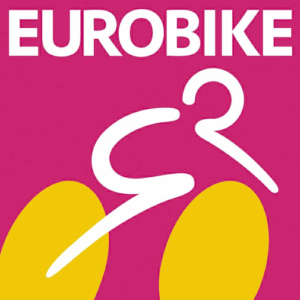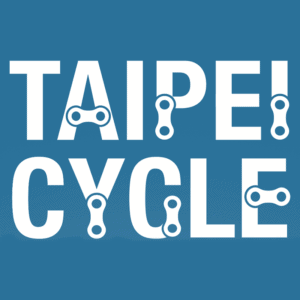‘More’ is not always better. A segment of consumers is looking for e-bikes with less bulk, less torque and less battery capacity. The market for these kinds of light-support e-drive systems is still growing, and so is the number of suppliers.
While the mainstream trend in e-bikes is still pushing for more torque and larger-capacity batteries, this also results in higher weight and chunky looks that turns off some potential buyers. These consumers would prefer an e-bike with more elegant looks and less weight, even if this meant the support from the electric motor is reduced. This is exactly what the light-support concept is aiming for. By reducing the maximum torque of the e-drive system, a battery with a smaller capacity can still offer a range that is easily sufficient – certainly for the shorter distances typical for daily errands. Those smaller batteries fit into downtubes with a much smaller diameter, helping to disguise the presence of an e-drive system. And since they weigh less, you do not have to leave that e-bike outdoors overnight, exposed to thieves — you can take it up the stairs and park it indoors.
Another popular use case for the light-support concept are sporty e-bikes. E-gravelbikes and even more so e-roadbikes are mostly ridden at speeds above 25 kph where the electric assistance shuts off by law. The motor is mostly needed as a climbing aid and to get going after a stop. A natural ride feeling when pedaling without support is another key feature in this segment. Riders want to be rewarded with some decent acceleration when pedaling harder and faster. For adventures in terrain, a certain group of mountain bikers happily trade some support for a lighter bike that offers more playful and agile handling. And then there are e-bikes for children — another niche where this concepts makes perfect sense, as the reduced torque and weight make it much easier for youngsters to keep their e-bikes under control and move them around.
The light-support segment has seen two early movers: While Spanish start-up Ebike Motion relied on a hub-motor based solution from the start, Southern German company Fazua went for a compact mid-motor. Both enjoyed considerable success with their respective concepts and as a consequence got acquired by larger corporations with an automotive background, namely Mahle and Porsche eBike Performance. Swiss electronics specialist Maxon was next to join the fray with its Bikedrive Air system, and TQ made waves with its compact HPR50 system. With Bosch eBike Performance launching its Performance Line SX system last year, the light-support concept has truly entered the spotlight. So it does not come as a surprise that more suppliers are pushing into this market and strive to meet the benchmark of 4 kg for a complete e-drive system.
Mahle Smart Bike Systems was a first mover in the light-support segment and is rolling out the X30 system as its updated second-tier option.
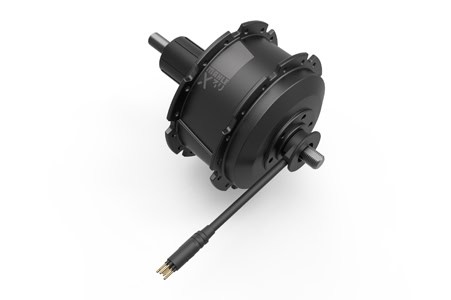
The rear hub as the drive unit comes with flanges for j-bend spokes, weighs in at 1.9 kg and delivers a maximum torque of 45 Nm – less than with the top-shelf X20 but slightly more than with the original X35 system. The full e-drive system hits the scales at 3.5 kg. Thanks to torque and cadence sensors, the support provided by the X30 system is decidedly dynamic, rewarding the rider for pedaling harder or faster. The battery (236 Wh or 350 Wh), optional external battery (171 Wh), controllers and optional display of the new X30 e-drive system are fully compatible with the X20.
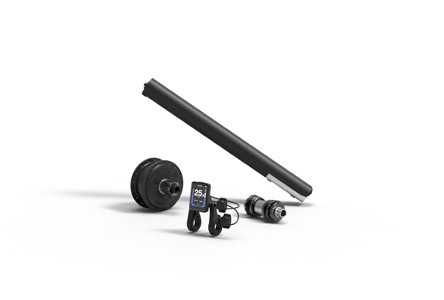
As a subsidiary of KMC Chain, Kynamic first focused on offering services for e-drive suppliers before launching products of its own. The KY-BC250 system is to be launched in Q4 2024 and aims at a system weight of 3.6 kg. Its rear hub motor with a 142 mm thru-axle weighs in at 2 kg, comes with a maximum torque of 30 Nm and is compatible with 12-speed cassettes. The bottom bracket has an integrated torque sensor. An integrated Bluetooth data port on the 2-inch LCD color display adds connectivity options. Lower-profile HMI solutions that can be integrated neatly into the top tube or stem will be on display at Eurobike as well, and the in-tube battery with a capacity of 250 Wh fits into the slim downtubes typical of e-roadbikes and e-gravelbikes as well.
As a specialist for cables, sensors and connectors Sinbon Electronics is expanding its business into light-support e-drive systems. Running on a current of 36 V, its hub-based Chariot R250 system focuses on maximizing motor efficiency.
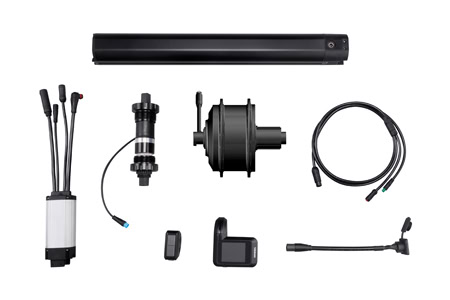
Its hub motor runs on a 142 mm thru-axle, comes with flanges for j-bend spokes and cranks out a maximum torque of 45 Nm. For dynamic support a bottom bracket with an integrated torque sensor is part of the system as well. This drive unit is combined with a battery with a capacity of 375 Wh as a default. Given the industrial background of Sinbon it does not come as a surprise that buyers get to choose from various battery shapes and sizes. As for the controls and the display there are plenty of options to fit various design concepts and use cases.
For buyers looking for flexibility regarding the axle types and brake systems Vinka Motor has the right light-support system with its rear hub-based HR40i drive unit.
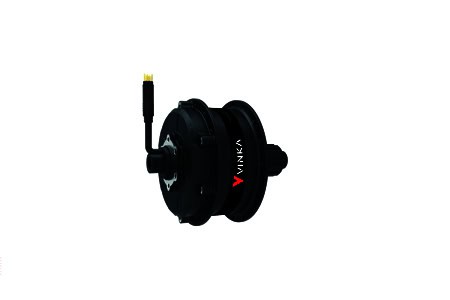
At 2.5 kg this may not be the most lightweight option exactly, but at 40 Nm it dishes out one third more torque than the more compact HR60i unit. One aspect worth mentioning is Vinka’s advanced AIoT Max connectivity that allows for the e-drive system to be combined with additional electronics such as tire pressure sensors, a rearward-facing camera and a radar devices that warns of traffic approaching from behind. When matched with a smartphone or other smart devices, AIoT Max also allows to remotely monitor and manage an e-bike – or to lock it with a simple tap on the touchscreen.
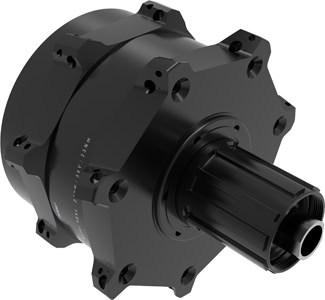
While the brand DT Boost may be new, the parent company Da Shiang Automation [hall 9.2 / C30 and F11 / F32] is one of Taiwan’s leading specialist in robotics.

Its flagship product is the FMS-01 system, designed for e-road bikes and e-gravelbikes.
A particular focus has been put on a frictionless and smooth ride feeling especially when exceeding the speed where the motor’s assistance shuts off. The automatic DNGage clutch system is key to achieving this as it only engages when the motor is running. Ceramicspeed bearings further lower the friction within the hub. The FMS-01 hub is seriously lightweight at 1.5 kg, and according to DT Boost the maximum torque of 23 Nm is equivalent to a mid-motor with 55 Nm. Contributing to the system’s low weight are the batteries with a capacity of 250 Wh that are offered in in-tube or bottle-style versions. As for the controller and the display, DT Boost offers various options that all come with Bluetooth connectivity and Di2 compatibility.
Rather than eyeing e-roadbikes and e-gravelbikes, Mivice [hall 8 / H12] positions its X365 e-drive system as a solution for trekking and city bikes with electric assistance. At 2 kg the compact mid-motor is seriously light, delivering a maximum torque of 65 Nm.
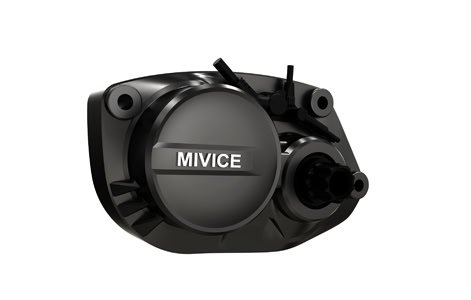
Built around a chainline of 47 mm and sporting an ISIS-standard splined axle, the X365 motor can be matched with quality cranks and offers a natural feeling when pedaling due to the combination of sensors for cadence, torque and speed. Thanks to its high system efficiency the entire 36 V system can be combined with smaller-capacity batteries without cutting into its range, resulting in less weight. By default the X365 system comes with Mivice’s compact 1.4 inch D101 colour display, but other options are available as well, depending on the e-bike type at hand.
With a competitive weight of 1.9 kg for its drive-unit that disappears almost entirely in the downtube section of a frame and a maximum torque of 60 Nm, the M11 of Truckrun [hall 8 / G06] is a perfect example of a light-support system.
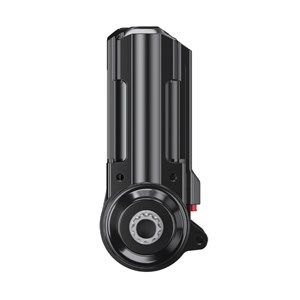
To appeal to sporty riders the mid-motor comes with an ISIS standard axle and the system has been tweaked to work best at higher cadences. It does so at low noise levels as well.
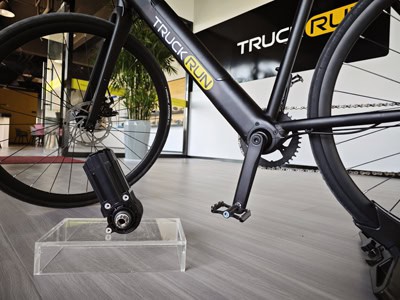
As for the controllers and displays, Truckrun has a selection of solutions to match the needs of buyers and the type of e-bike the e-drive system is to be spec’ed for. Since the M11 is running on a current of 36 V there’s a big choice of batteries that can be used with the system, further adding to the versatility of this design.
For this kind of use the maximum torque of 65 Nm is fully sufficient. With a weight of 2.5 kg the Pico motor unit performs well on the scales as well, certainly when combined as a system with the company’s own 370 Wh semi-integrated Shade battery pack.
With its compact dimensions and no-frills design, the new Pico mid-motor of Oli eBike Systems takes aim at the market for minimalist urban e-bikes.
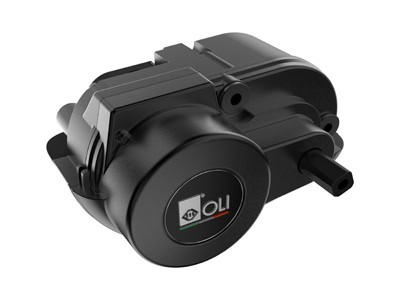
Oli eBike Systems also has a selection of controllers and displays ready to cover various needs.
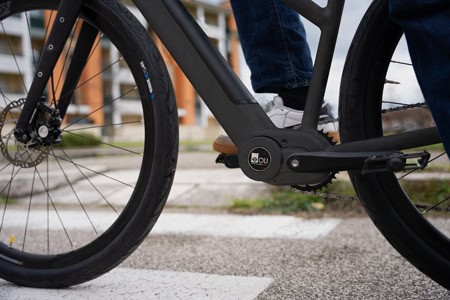
The Pico e-drive system is tailored to the needs of affordable city bikes: from the square interface for the cranks to the coaster brake option and the possibility to mount a chain guide and a bash guard, the Pico truly is an city-proof product with a lot of potential in value-oriented volume markets.
Boasting a rich history in motorsports, Italian manufacturer Polini Motori has been producing mid-motors for e-bikes for quite a while now. The latest E-P3+ GP version pays tribute to this history, with the GP abbreviation standing for Grand Prix. When set to Race mode, the most powerful of the three default modes, this motor dishes out its full 80 Nm of torque depending on signals from the torque and cadence sensors.
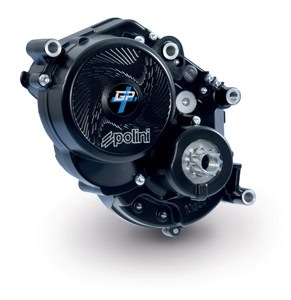
According to Polini, this makes this mid-motor a good match for e-roadbikes and e-gravelbikes. Two additional modes can be configured to match personal preferences using the manufacturers’s smartphone app. At 2.95 kg the E-P3+ GP motor unit is not the most lightweight unit on the market, but those 80 Nm are also not commonplace in the light-support segment. That extra bit of support calls for a larger battery, however – Polini recommends its EVO battery with a capacity of 500 Wh.

